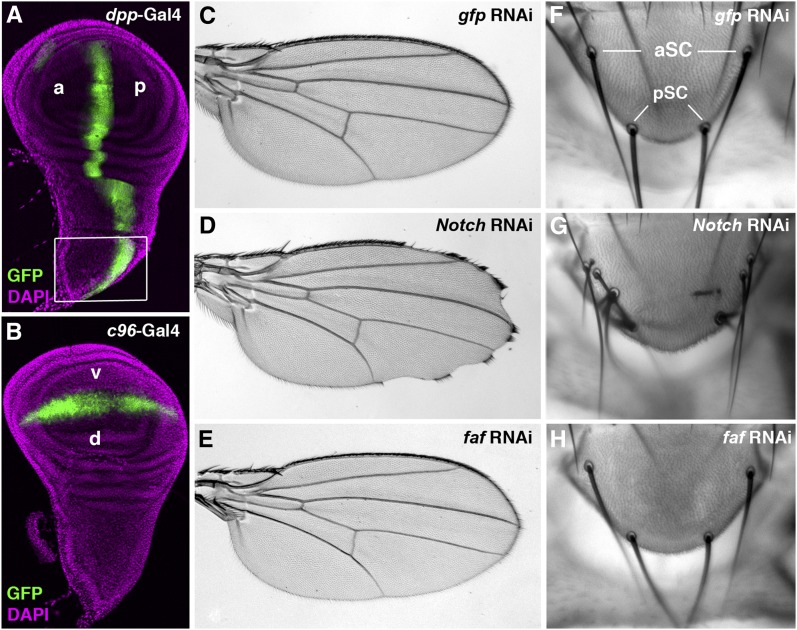Figure 2 .
The adult wing margin and scutellar bristle phenotypes are simple but effective readouts for altered Notch signaling. The larval wing imaginal disc is the primordial tissue of the adult wing blade and notum. The expression patterns of the dpp-Gal4 (A) and the C96-Gal4 drivers (B) in wing discs were marked by the UAS-gfp transgene (green). The dpp-Gal4 drives transgene expression abutting the anterior-posterior (a-p) boundary (A), whereas the C96-Gal4 confers gfp expression along the dorsal-ventral (d-v) boundary, i.e., presumptive wing margin in the wing pouch (B). Note that the dpp-Gal4 is also expressed in regions where the adult scutellar structures are derived (box; A). DAPI staining was used to mark nuclei in wing discs (magenta; A and B). As expected, ectopic expression of gfp RNAi by the C96-Gal4 did not produce any effect in the adult wing margin (C). In contrast, reduced expression of Notch receptor gene by RNAi resulted in serrations along the wing margin (D). However, knockdown of the expression of faf, which encodes a DUB that specifically regulates Notch signaling in the developing Drosophila eye, had no effect on patterning of the wing margin (E). Note that wings dissected from female flies are shown in all figures. Two pairs of scutellar bristles, anterior SC and posterior SC (aSC and pSC), are present in the scutellum (F). When the expression of Notch was knocked down by RNAi using the dpp-Gal4, an increased number of scutellar bristles was observed (G). In contrast, overexpressing RNAi targeting either gfp (F) or faf (H) had no effect on the specification of scutellar bristles. Phenotypes shown in panels D (n > 20) and G (n = 10) are fully penetrant.

